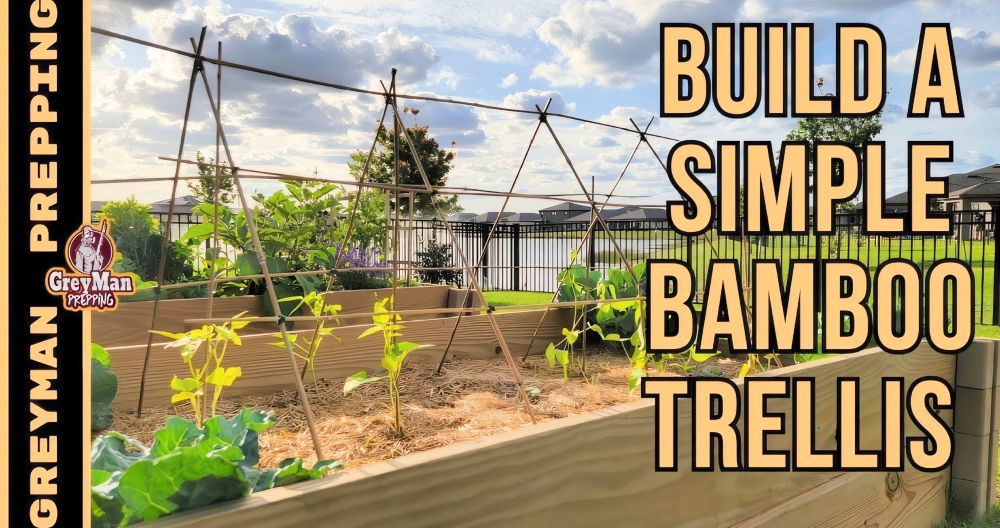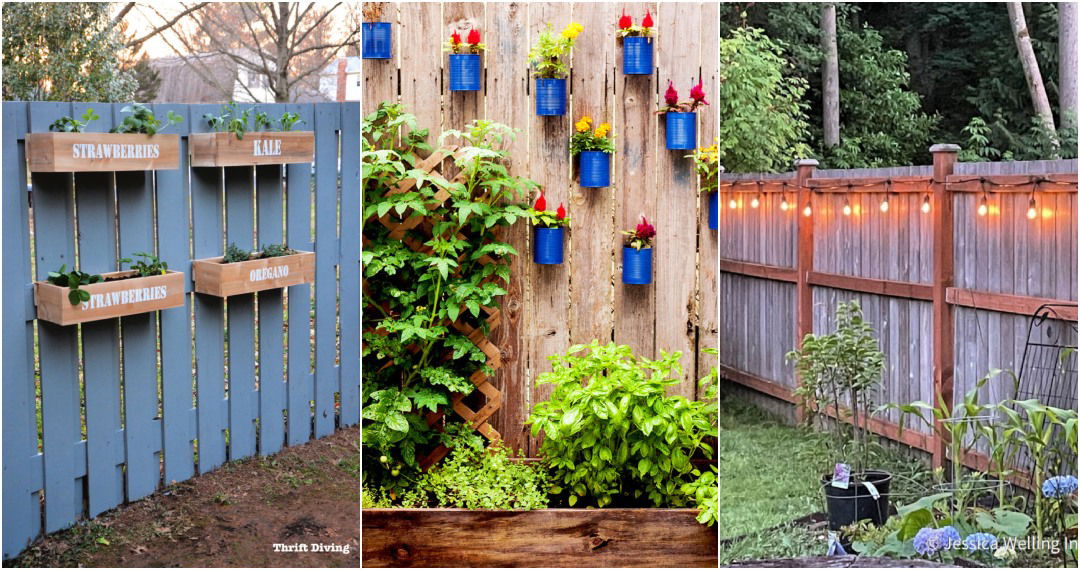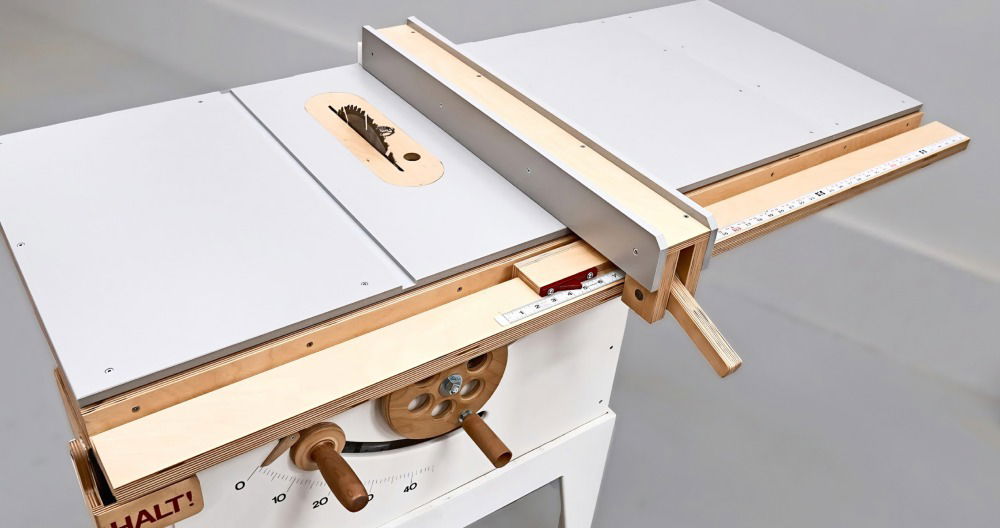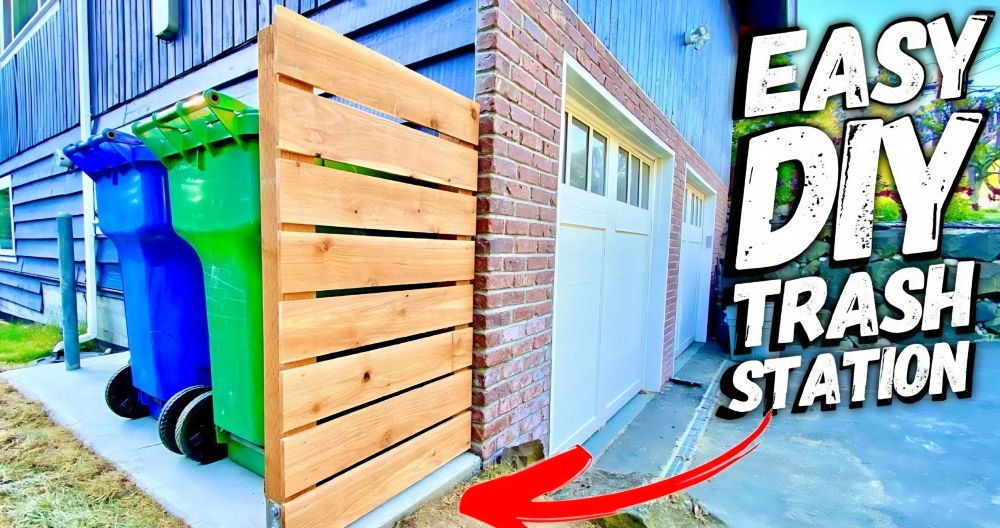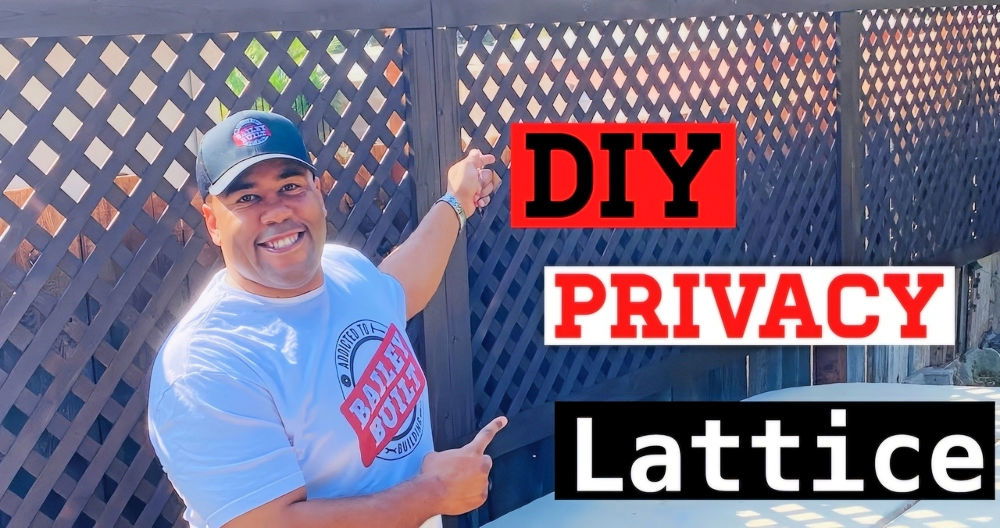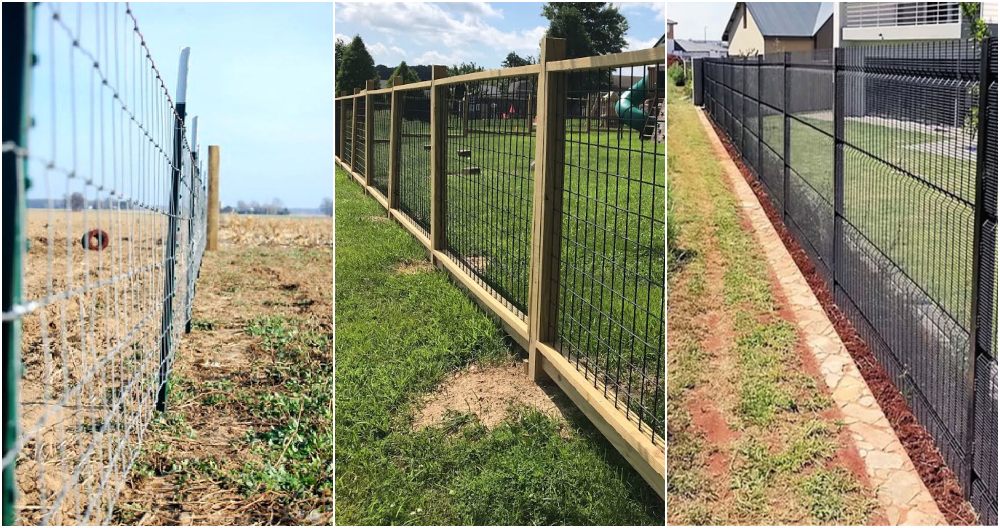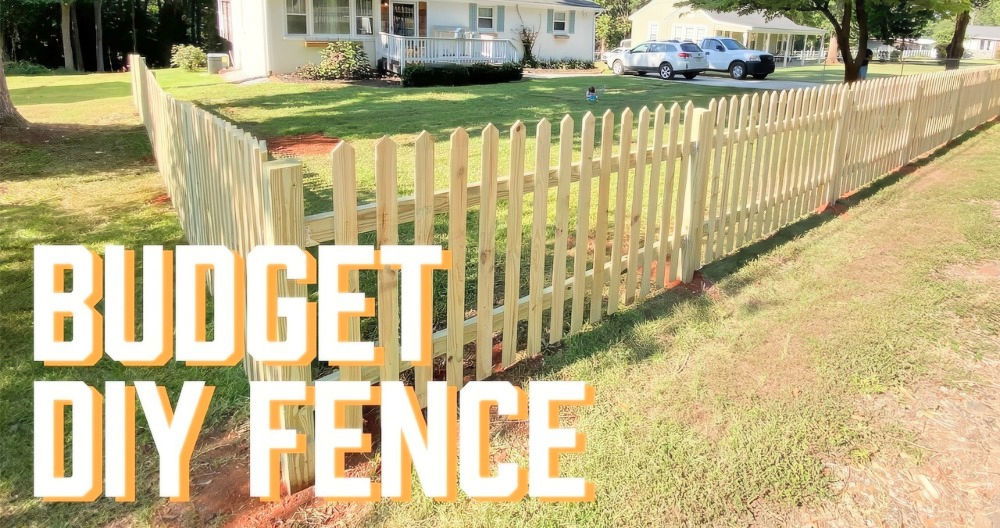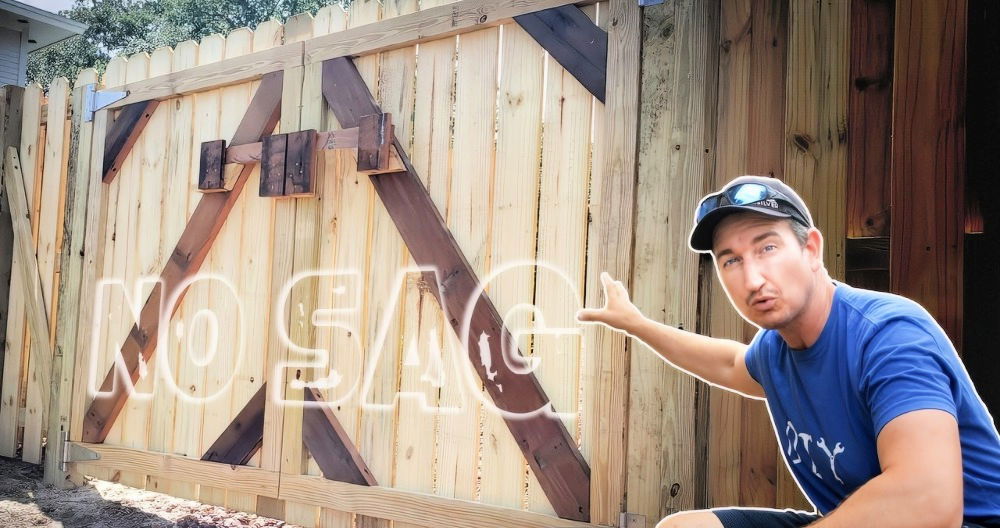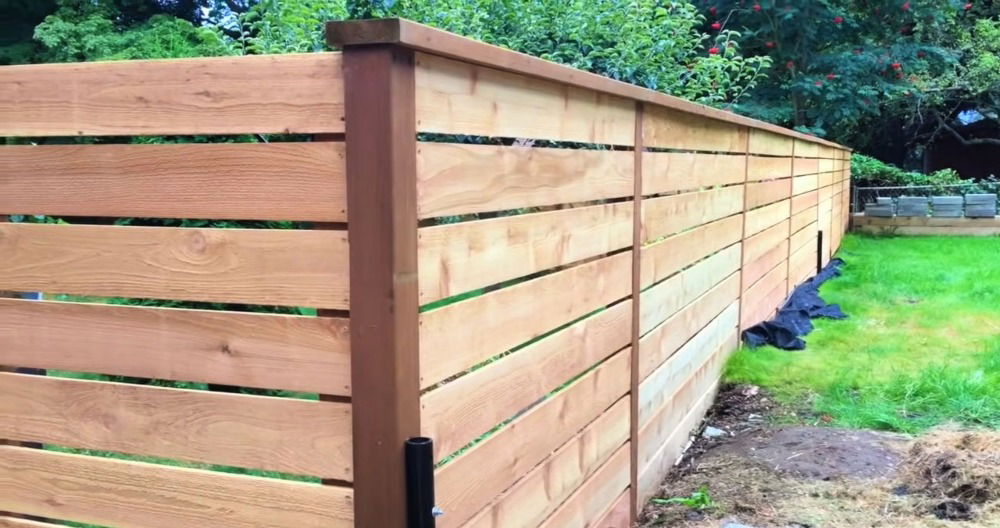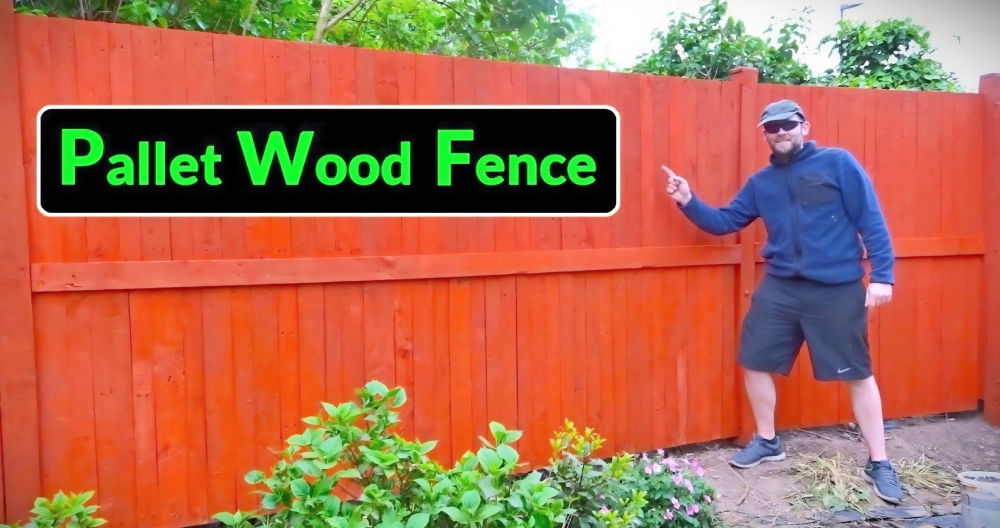Building a DIY bamboo fence is a fun and fulfilling project that allows you to design a natural-looking boundary for your property. In this step-by-step tutorial, I'll take you through the process based on my personal experience of building one. From gathering materials to the final installation, I learned some useful tips along the way that made the whole process much smoother. Let's dive into it.
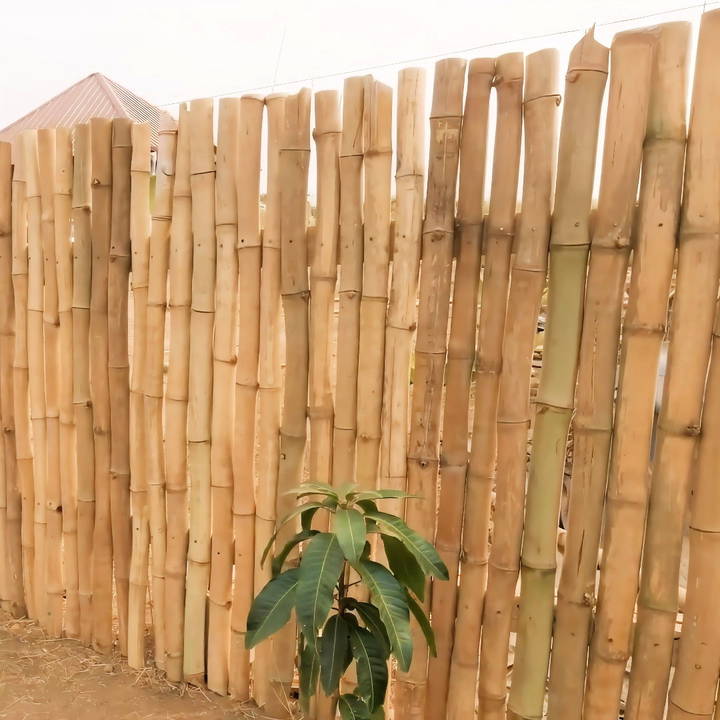
Why Bamboo for Fencing?
Bamboo is a great material for fences because it's sustainable, affordable, and easy to work with. It's also flexible enough to fit different designs while offering a natural, earthy aesthetic. I chose bamboo mainly because I wanted a temporary solution for my property, and bamboo fit the bill perfectly.
Step by Step Instructions
Follow given DIY bamboo fence step-by-step instructions below from gathering bamboo to final adjustments, and learn how to build and protect your bamboo fence with ease.
Step 1: Gathering Bamboo
My first task was finding bamboo. While I could harvest some from remote areas, I ended up purchasing bamboo from a local source to save time. Whether you're harvesting or buying, make sure the bamboo is straight, firm, and long enough to work with.
Once I had my bamboo, I needed to split it in half. I used a machete and a metal bar to divide each bamboo stem lengthwise. This was probably the most labor-intensive part of the process, but it's essential to get uniform sections.

Step 2: Preparing the Wooden Pillars
For the fence structure, I used 2x2 hardwoods as pillars. These would hold the bamboo in place, and I had to ensure they were stable. I drilled holes into the base of each wood post and inserted metal rods, which helped anchor the posts securely in concrete.
This step is critical because the strength of your fence depends heavily on how well the posts are planted. The rods make sure the posts don't shift over time, especially when exposed to wind or weather changes.
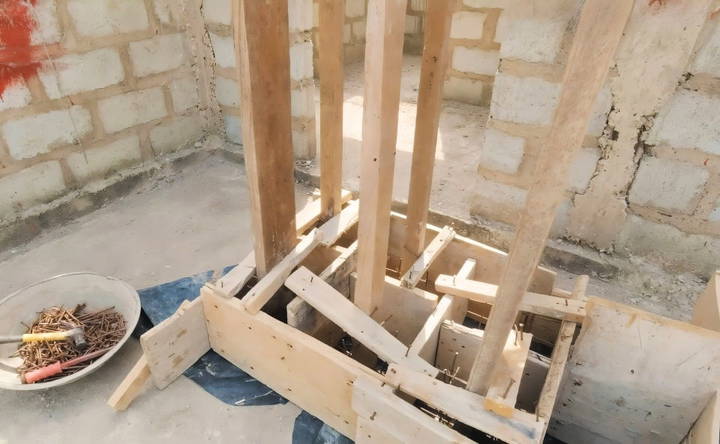
Step 3: Building Concrete Bases
After setting up the rods, I needed to prepare the concrete base. This is what would hold the wooden pillars upright. I built a mold using wood, making small chambers for each post. Even though I initially planned for eight posts, I only had six pieces of wood available, so I adjusted the plan to fit the materials at hand.
Mixing concrete involves combining sand, cement, and gravel in the right proportions. In this case, I mixed them manually and added enough water to achieve the right consistency. Pouring the concrete into the mold around the posts ensured they were firmly in place once it set.
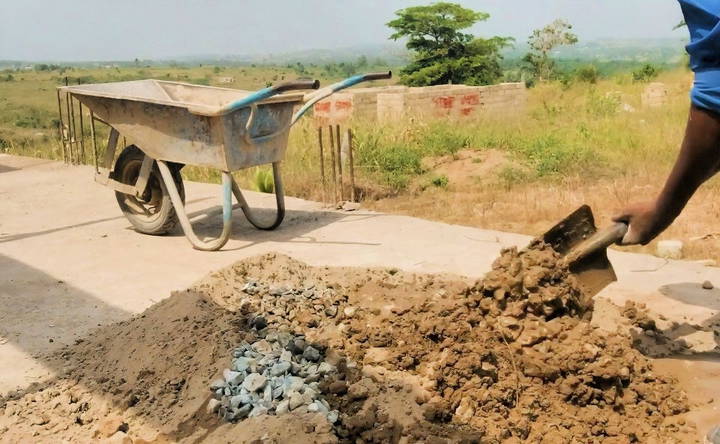
Step 4: Setting Up the Posts
After letting the concrete dry, I moved the posts to their designated spots. Spacing them correctly is essential to maintaining the integrity of the fence. I spaced mine evenly and used 2x4 lumber to brace the posts temporarily.
To ensure that the bamboo would stay in place later, I attached the 2x4s horizontally across the posts. These horizontal braces act as the frame where the bamboo would later be attached.
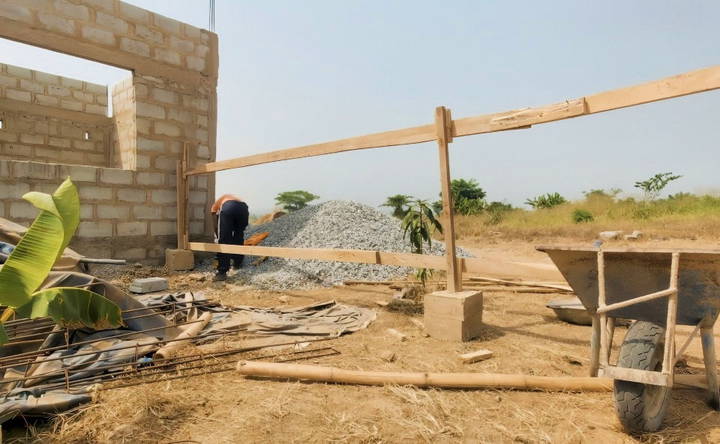
Step 5: Attaching the Bamboo
Once the frame was ready, I brought over the bamboo halves and started attaching them to the horizontal braces. To secure the bamboo, I first drilled small holes in each piece. This step prevents splitting when driving nails into the bamboo. Initially, I considered using screws, but I found that nails worked just as well, and they were faster to apply.
I cut the bamboo to my desired height, then drilled and nailed them into place, ensuring each piece was tightly secured to the frame.
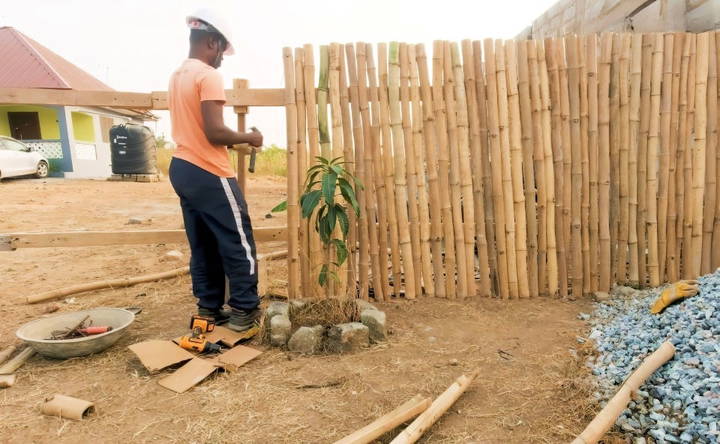
Step 6: Adjusting the Bamboo Height
To maintain consistency, I ran a string across the top of the bamboo to guide my cuts and keep the height uniform. This little trick saved me from eyeballing every individual piece and helped keep the overall look neat.
Step 7: Spraying for Termites
Bamboo, like any wood material, is susceptible to termite damage. To prevent this, I sprayed all the bamboo with a termite-repellent solution. This is an important step if you're using natural materials for any outdoor project, as it ensures longevity.
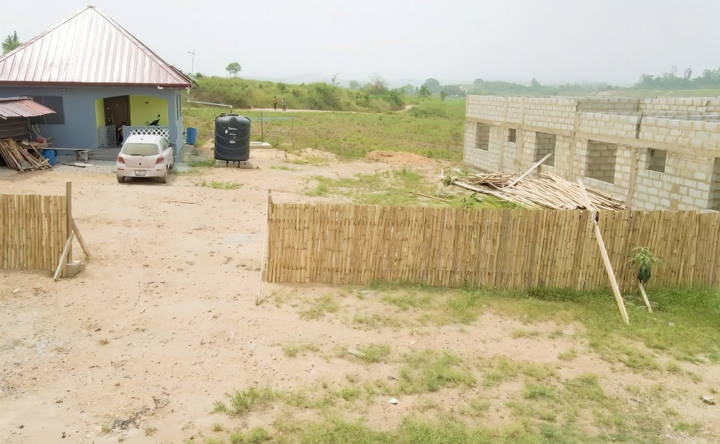
Step 8: Final Adjustments
Once everything was in place, I noticed the wind was causing some instability in the fence. To counter this, I added extra bracing by installing more 2x4s horizontally across the bamboo. This helped firm up the structure and kept everything standing strong, even during heavy winds.
Lessons Learned
- Plan Your Material Needs in Advance: I initially underestimated how much bamboo and wood I'd need. Be sure to calculate your material needs based on the size of your fence before starting.
- Proper Spacing is Key: Make sure the wooden posts are evenly spaced and secured. This ensures a sturdy fence that won't shift or lean over time.
- Use Proper Tools: Having a reliable drill and sharp machete made the process much faster. If you're using nails like I did, invest in a good hammer to avoid hand fatigue.
- Termite Treatment is Essential: Bamboo can be vulnerable to pests, so applying a protective spray is crucial for durability. Don't skip this step if you want your fence to last.
- Be Prepared for Adjustments: I had to make several changes along the way, like adding additional bracing after I saw how the fence held up against strong winds. Don't be afraid to adapt your plan as needed.
The bamboo fence was a temporary solution for one side of my property, but it turned out so well that I'm considering adding more bamboo sections to the front. My plan is to eventually incorporate concrete or block fencing around the other sides for a more permanent solution.
For now, the bamboo fence provides a great natural aesthetic while serving its purpose. And when the time comes to build the concrete sections, moving or adjusting the bamboo will be easy because of the removable concrete bases I buildd.
Creative Bamboo Fence Ideas
Bamboo fences are not only functional but also add a touch of natural beauty to your outdoor space. Here are some creative ideas to inspire your next DIY bamboo fence project:
1. Bamboo Fence with Lighting
Enhance your bamboo fence by incorporating lighting. Use LED lights or garden lamps to illuminate the fence at night. This not only adds a dramatic effect but also improves the overall ambiance of your garden.
2. Staggered Bamboo Fence
Build a unique look by staggering bamboo poles of different heights. This design works well for flower beds or as a decorative border. The varying heights add visual interest and a dynamic feel to your garden.
3. Woven Bamboo Fence
For a more intricate design, try weaving bamboo poles together. This method builds a strong and durable fence that also looks elegant. It's perfect for adding a rustic charm to your backyard.
4. Bamboo Privacy Screen
If privacy is your main concern, consider building a tall bamboo privacy screen. This type of fence can block out unwanted views and build a secluded area in your garden. You can also add climbing plants to the fence for extra greenery.
5. Bamboo Fence with Metal Accents
Combine bamboo with metal elements for a modern twist. Use metal frames or accents to support the bamboo poles. This mix of materials adds a contemporary touch to the traditional bamboo fence.
6. DIY Bamboo Fence Panels
If you prefer a hands-on project, make your own bamboo fence panels. Cut bamboo poles to the desired length and attach them to wooden frames. This allows you to customize the size and shape of your fence to fit your space perfectly.
7. Decorative Bamboo Fence
Add decorative elements to your bamboo fence to make it stand out. You can paint the bamboo poles in different colors or add decorative carvings. This is a great way to personalize your fence and make it a focal point in your garden.
8. Bamboo Fence with Planters
Incorporate planters into your bamboo fence design. Attach small pots or planters to the fence and fill them with flowers or herbs. This not only adds greenery but also makes the fence more functional.
9. Short Bamboo Fence
For a simple and minimalist look, build a short bamboo fence. This type of fence is ideal for marking boundaries or making a low barrier around your garden. It's easy to install and maintain.
10. Bamboo Fence with Natural Finish
Keep the natural look of bamboo by using untreated poles. This gives your fence a rustic and organic appearance. Over time, the bamboo will weather and develop a beautiful patina.
Bamboo fences can beautify and add functionality to your outdoor space. Suitable for both simple and elaborate designs, bamboo fits any style.
Common Mistakes to Avoid
Building a bamboo fence can be a rewarding DIY project, but there are some common mistakes that can lead to problems down the line. Here are some pitfalls to avoid to ensure your bamboo fence is sturdy, durable, and looks great.
1. Incorrect Bamboo Selection
Choosing the wrong type of bamboo can affect the durability and appearance of your fence. Make sure to select bamboo that is treated and suitable for outdoor use. Untreated bamboo can rot quickly when exposed to the elements.
2. Poor Ground Preparation
Not preparing the ground properly can lead to an unstable fence. Ensure the ground is level and free of debris before you start building. Digging proper post holes and using concrete to set the posts can provide a solid foundation.
3. Improper Spacing of Bamboo Poles
Spacing the bamboo poles too far apart can compromise the fence's strength and privacy. Make sure the poles are close enough to provide adequate coverage and support. Consistent spacing also gives the fence a more uniform look.
4. Neglecting Weather Protection
Bamboo is susceptible to weather damage if not properly protected. Applying a sealant or varnish can help protect the bamboo from moisture and UV rays. Regular maintenance, such as reapplying the sealant, can extend the life of your fence.
5. Ignoring Maintenance
Even though bamboo is a durable material, it still requires regular maintenance. Neglecting to clean and inspect the fence can lead to issues like mold, mildew, and insect infestations. Regularly check for any signs of damage and address them promptly.
6. Using Inadequate Fasteners
Using the wrong type of fasteners can weaken the structure of your fence. Make sure to use galvanized or stainless steel screws and nails, as they are resistant to rust and corrosion. Avoid using regular nails or screws that can rust and weaken over time.
7. Improper Installation Techniques
Incorrect installation techniques can lead to a weak and unstable fence. Follow a step-by-step guide and ensure each step is done correctly. For example, make sure the bamboo poles are securely attached to the posts and that the posts are firmly set in the ground.
8. Overlooking Aesthetic Details
While functionality is important, don't overlook the aesthetic aspects of your bamboo fence. Ensure the tops of the bamboo poles are even and consider adding decorative elements to enhance the fence's appearance. A well-finished fence not only looks better but can also add value to your property.
9. Not Considering Local Climate
Different climates can affect bamboo differently. In humid areas, bamboo can be more prone to mold and mildew, while in dry areas, it can become brittle. Choose the right type of bamboo and protective treatments based on your local climate conditions.
10. Failing to Plan Properly
Lack of planning can lead to mistakes and wasted materials. Before starting your project, make a detailed plan that includes measurements, materials needed, and a step-by-step process. Proper planning can save you time and money in the long run.
By avoiding these common mistakes, you can ensure your bamboo fence is both beautiful and long-lasting.
FAQs About DIY Bamboo Fence
Discover everything you need to know about DIY bamboo fences in this comprehensive FAQ guide. Get tips, answers, and expert advice on bamboo fencing!
For a sturdy bamboo fence, dig holes at least 2 feet deep. This depth helps to anchor the posts securely, especially if you live in a windy area. You can use concrete to set the posts for extra stability.
With proper care and maintenance, a bamboo fence can last up to 15-20 years. Regular cleaning, sealing, and repairing any damage promptly will extend its lifespan.
Yes, you can paint or stain your bamboo fence to match your aesthetic preferences. Use a paint or stain that is suitable for outdoor use and apply it evenly. This can also help protect the bamboo from the elements.
Bamboo is a sustainable and eco-friendly material. It grows quickly and can be harvested without causing significant damage to the environment. Using bamboo for fencing is a great way to reduce your carbon footprint.
You can buy bamboo poles from garden centers, home improvement stores, or online retailers. Make sure to choose high-quality bamboo that is straight and free from cracks or splits.
Conclusion:
Building a DIY bamboo fence is a straightforward yet rewarding DIY project that can add a touch of nature to your space. With the right tools and a bit of patience, you can build a sturdy and visually appealing fence that will last for years.


